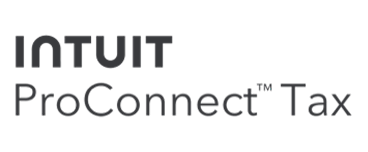
7 Ways to Incorporate Mindfulness into Your Workday
Mindfulness is, at its core, the practice of observing rather than judging or immediately reacting. It’s intentionally taking a step back to assess what is going on internally for you throughout the day. Having this ability allows you to not only live and work in a more balanced and productive way, but it can also help you work through pivotal moments in personally and professionally, taking stock of what happened and determine your next best path.
Let’s look at practical ways to apply the concept of mindfulness to help manage your own work life more effectively:
1. Know your individual energy flow.
Do you feel the most energetic and productive in the morning? Or are you a night owl? When do you get the most done at work? One way to really hone in on your energy flow in order to structure your tasks around it is by keeping an energy journal for a week or two. Write down your mental, emotional and physical energy levels for each hour of the day. Once you know the ebbs and flows of your mental and physical energy you can shift your calendar accordingly.
2. Reset your energy throughout the day.
It’s possible to create more positive energy throughout the day by simply switching activities at regular intervals. For example, you might spend 50 minutes focused on a report or tax return, then reset your energy by doing something mindfully like taking a walk outside or eating an apple, or other healthy snack, completely free of distractions. When you go back to do more work, you’ll be able to focus on it with renewed energy.
3. Let go of preconceived notions.
We so often approach meetings or work projects attached to certain outcomes or preconceived feelings about them. Instead, take a mindful approach by viewing each thing you need to do as an experience and not having a preconceived notion about them. For example, if I expect a client meeting to be tense, then that is the energy I am going to be bringing into the meeting. Try instead to approach the meeting without judging how it is going to be.
4. Hit the pause button.
We can all be too quick to respond. Instead, give yourself pauses and moments to think before you respond or choose not to respond. Remember, we have the power to regulate ourselves…if we choose to.
5. Respect your brain’s limits.
It’s often tempting when we are busy to push our brains past the point of diminishing returns. Doing so is a real productivity killer. Instead, do an energy re-setting activity and give your brain a break. You’ll likely get more done with less effort when you go back at it.
6. Be accountable for your schedule.
It’s easy to stack up meetings without a break to “get more done.” Instead, take back control of your calendar in order to approach things more mindfully rather than rushing from appointment to appointment. Block off time and be adamant about about preserving the space on your calendar.
7. Leave work at work.
Once your work day is complete, it’s important to transition from your “work space” to your “home space” or whichever experience you are entering into next. Find an activity such as listening to calming music to help you transition from your work experience so that you can give your next activities your full attention.
The key to being more mindful throughout your workday is simply to notice when you are off balance and do the self-care that you need to regain your clarity. The practices above can help you do this. Start with just one idea and practice it regularly for a few weeks, then add to your practice when you are ready. The resulting energy gains, renewed mindset and reduced stress levels are well worth the effort!
Managing with Mindfulness
Mindfulness. It’s a term that is often overused in our culture. But what does it really mean to be mindful and make your firm more productive and focused? Here are some ideas to help you make mindfulness part of your firm culture:
Start small. There’s no better time to start incorporating mindfulness into your day than busy season. Doing something as simple as starting a meeting with two minutes of silence can be a good way to ease into a more mindful approach . During this time staff may want to meditate, make a last-minute call or answer emails. By doing so they will then be prepared to be present in the meeting.
Treat people individually. Acknowledge that some people may not feel comfortable practicing mindfulness, especially as part of a team. Ask for their feedback about the practices your firm is implementing and address their needs. Remember, mindfulness should not be a one-size-fits-all effort.
Tackle it as a team. While you can (and should) model mindfulness as you lead your firm, don’t discount the idea of delegating activity planning to other members of your team. Perhaps one month one team member suggests a new mindfulness activity such as a group yoga class in the break room, and the next month someone else offers another idea. This helps to make it a team effort and keeps the momentum going.
Shorten meetings to creating breathing room. Most people will use up every last minute of a meeting—even if what is being discussed is redundant. Instead, consider implementing a firm-wide practice of shortening meetings by five minutes to give you and your team breathing breaks. Encourage everyone to take “extra” time to reset their energy for their next activity so they can be fully present for it.
Create celebratory experiences. Another important mindfulness practice is to be in the moment. This includes celebrating in the here and now rather than just charging ahead to the next project or waiting until the holidays to show gratitude for your team. Schedule a regular weekly time to recognize all that you have done as a team and all that you have to be thankful for. Instead of monetary bonuses, consider giving your team an experience such as theater outing or sharing a meal together, then really savor the time together.
Monitor your firm’s mindfulness. Perhaps more so than any other initiative you may put in place, you (or someone you delegate) need to monitor the mindfulness practices you introduce to make sure they are a good fit for your team and that they are serving a positive purpose. Be sure to consider how you can make your firm’s mindfulness practices even more meaningful.
The tips above can help you incorporate mindfulness in your firm and keep the flow going, so to speak. By managing your firm with mindfulness, you’ll support a more balanced work environment, improve the energy and focus of your team, and show your employees that their personal well-being is just as important as their professional contributions.






